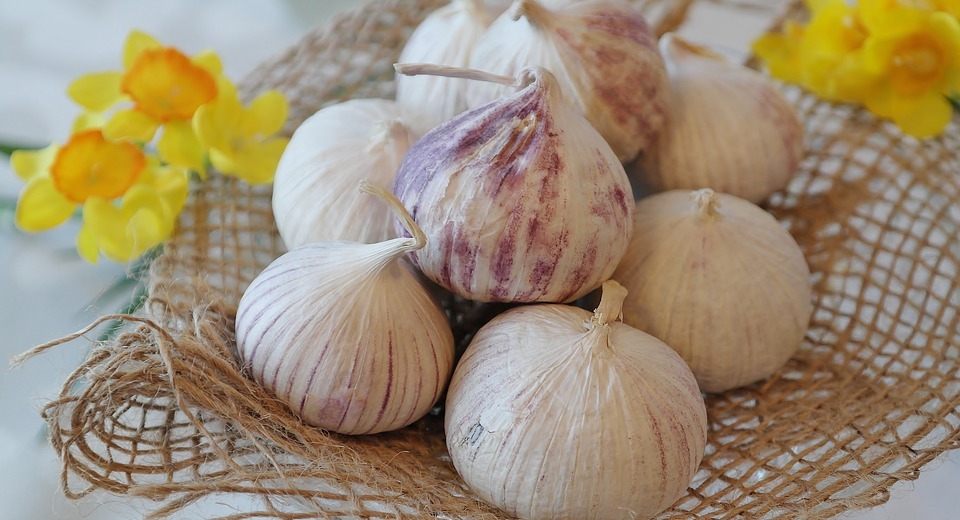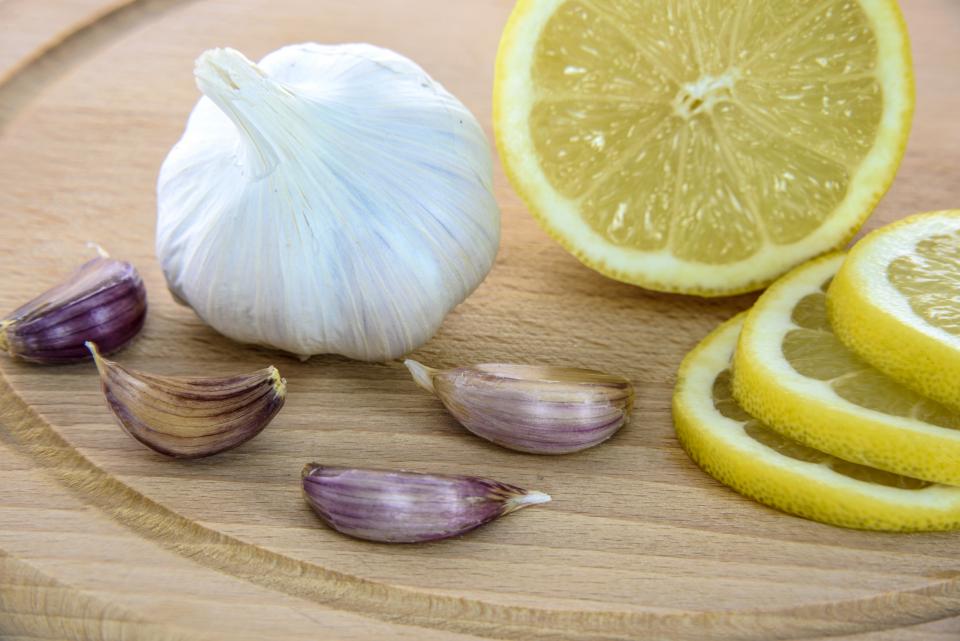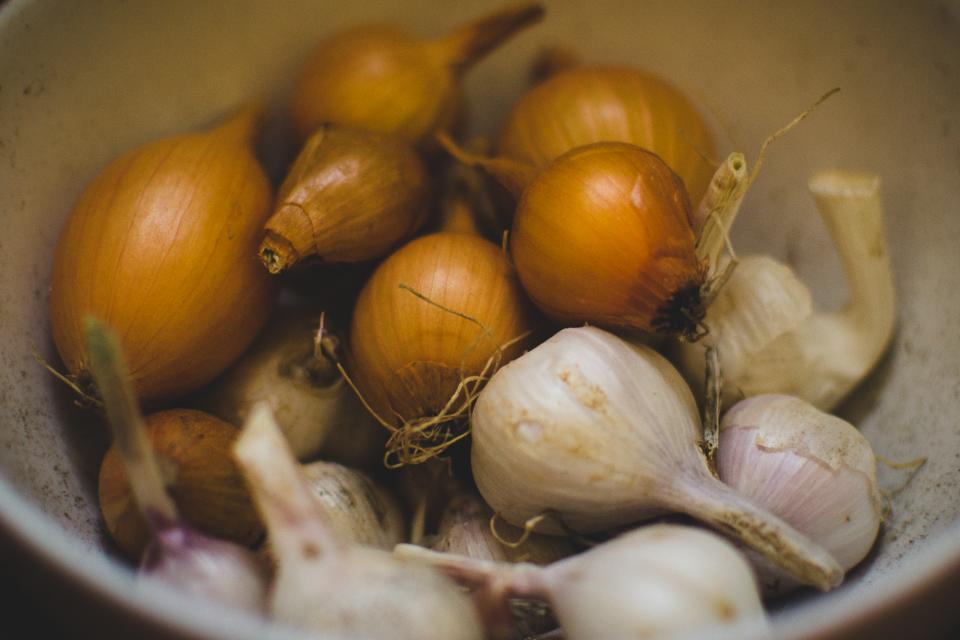This article aims to provide dog owners with a comprehensive understanding of the potential risks associated with garlic consumption in dogs. We will delve into the scientific evidence behind garlic toxicity, exploring the specific compounds responsible for harm, the mechanisms of action, and the factors influencing severity. We will also cover the various ways in which dogs may be exposed to garlic, from accidental ingestion of human food to the use of garlic-based supplements and treatments. Additionally, this guide will offer practical advice for preventing garlic poisoning, identifying symptoms, and seeking appropriate veterinary care.
Part 1: Understanding the Toxicity of Garlic

1.1 The Culprit: Organosulfur Compounds
Garlic's pungent aroma and flavor are derived from organosulfur compounds, particularly allicin. While these compounds contribute to garlic's health benefits for humans, they pose a significant threat to dogs. Allicin, upon ingestion, is rapidly metabolized into other reactive compounds like ajoene and allyl methyl sulfide, which are the primary culprits behind garlic toxicity in dogs.
1.2 A Closer Look at the Mechanism
These reactive compounds target red blood cells, causing oxidative damage. This damage disrupts the structure and function of red blood cells, rendering them unable to effectively carry oxygen throughout the body. This results in a condition known as haemolytic anaemia, characterized by a deficiency in red blood cells and a consequent lack of oxygen delivery.
1.3 The Severity Factor: Dose Makes the Poison
The severity of garlic poisoning depends heavily on the amount consumed, the size of the dog, and their individual sensitivity. Smaller dogs, especially toy breeds, are more vulnerable due to their smaller body mass and higher metabolic rate. Certain breeds, like those with a genetic predisposition to red blood cell disorders, might also be more susceptible.
Part 2: Common Sources of Garlic Exposure

2.1 Garlic in Human Food: A Hidden Danger
The most common source of accidental garlic ingestion is through human food. While small amounts of garlic in cooked food are unlikely to cause serious harm in larger dogs, it's important to avoid giving any garlic-containing foods to your pet. Leftovers and scraps containing garlic should be kept out of reach.
2.2 Garlic Powder and Supplements: Concentrated Risk
Garlic powder and supplements are concentrated sources of allicin and related compounds, presenting a significantly higher risk of toxicity. Even small doses of these products can be dangerous for dogs. It is crucial to never give garlic powder or supplements to your dog, even for medicinal purposes.
2.3 Garlic-Flavoured Treats: Reading Labels is Crucial
Some commercial dog treats incorporate garlic flavouring. While the amount used in these products is generally considered safe, it is essential to read product labels carefully. Choose treats specifically designed for dogs and avoid those containing garlic or other potentially toxic ingredients.
Part 3: Recognizing the Signs of Garlic Poisoning

Early detection is crucial for prompt veterinary intervention and improving the chances of a full recovery. The following symptoms may indicate garlic poisoning in dogs:
- Weakness and lethargy: A noticeable decrease in energy and enthusiasm.
- Pale gums: A pale pink or white color instead of the usual healthy pink.
- Rapid breathing and increased heart rate: Panting or difficulty breathing, along with a faster heartbeat.
- Loss of appetite: Refusal to eat or a decrease in food intake.
- Diarrhoea and vomiting: Loose stools or vomiting, possibly containing blood.
- Dark urine: A change in urine color, possibly brown or reddish.
- Abdominal pain: Signs of discomfort, including whining or reluctance to be touched.
- Difficulty breathing: Labored breathing, wheezing, or gasping for air.
Part 4: Taking Action: What to Do If Your Dog Ingests Garlic
4.1 Seek Veterinary Help Immediately
If you suspect your dog has ingested garlic, contact your veterinarian immediately. Time is crucial in managing garlic poisoning, and early intervention is essential.
4.2 Provide Essential Information
Be prepared to provide your veterinarian with the following information:
- Amount of garlic ingested: The approximate quantity or size of the garlic source.
- Time of ingestion: When the dog ingested the garlic.
- Your dog's current symptoms: Describe any signs of illness your dog is displaying.
4.3 Veterinary Treatment Options
Your veterinarian may recommend the following treatment strategies depending on the severity of the poisoning:
- Inducing vomiting: To remove the garlic from the digestive system.
- Administering activated charcoal: To absorb toxins and prevent further absorption.
- Supportive care: Intravenous fluids to combat dehydration and electrolyte imbalances.
- Blood transfusions: In severe cases of anaemia, blood transfusions may be necessary to replenish red blood cells.
Part 5: Prevention is Key
The best way to protect your dog from garlic poisoning is to prevent exposure in the first place. Here are some essential preventive measures:
- Keep garlic out of reach: Store garlic securely in airtight containers or in a location inaccessible to your pet.
- Monitor your dog's diet: Supervise your dog's access to human food and ensure they do not consume any garlic-containing dishes.
- Educate family members: Teach children and other family members about the dangers of garlic for dogs and encourage them to avoid giving garlic to your pet.
- Choose dog-friendly treats: Select commercial dog treats that are specifically designed for dogs and free from garlic or other potentially toxic ingredients.
Part 6: FAQs
6.1 Is garlic always harmful to dogs?
While garlic can be harmful to dogs, the severity of the risk depends on factors such as the amount ingested, the dog's size, and their individual sensitivity. Small amounts of garlic present in cooked food are generally not harmful, but larger quantities or concentrated sources like garlic powder can be toxic.
6.2 Can garlic kill a dog?
In severe cases of garlic poisoning, especially when large amounts are ingested, garlic can be fatal to dogs. However, it is important to note that most cases of garlic poisoning are not life-threatening with prompt veterinary intervention.
6.3 How much garlic is safe for a dog?
There is no safe amount of garlic for dogs, and even small amounts can cause adverse effects. It's best to completely avoid giving garlic to dogs in any form.
6.4 Can garlic be used to deter fleas?
There is no scientific evidence to support the claim that garlic can deter fleas. In fact, ingesting garlic can be harmful to dogs and may not be effective in repelling fleas.
6.5 What are the long-term effects of garlic on dogs?
Long-term exposure to garlic can lead to chronic haemolytic anaemia, a serious condition that can affect a dog's overall health and lifespan. It is therefore crucial to avoid garlic consumption in dogs altogether.
6.6 Can I give my dog garlic-infused oil?
No, garlic-infused oils are not safe for dogs. They are concentrated sources of garlic and can lead to severe poisoning.
6.7 Is garlic bad for all dog breeds?
All dog breeds are susceptible to garlic toxicity. However, smaller dogs and breeds with pre-existing health conditions may be more sensitive to the effects of garlic.
This comprehensive guide provides valuable information for dog owners regarding the safety of garlic for their furry companions. By understanding the risks, taking preventive measures, and acting promptly in case of accidental ingestion, you can ensure your dog's health and wellbeing. Remember, it is always best to err on the side of caution and avoid giving garlic to your dog in any form.
Everyone is watching
-

Can Dogs Eat Bananas? A Guide to Safe Treats
DOGS & PUPPIESThis comprehensive guide will delve into the world of canine nutrition, focusing on the popular question: can ...
-

Can Dogs Eat Oranges? (Is It Safe or Toxic?)
DOGS & PUPPIESThis article delves into the question of whether dogs can safely consume oranges. We'll explore the nutrition...
-

Can Dogs Eat Grapes? The Shocking Truth About This Fruit
DOGS & PUPPIESThis article delves into the controversial topic of grapes and dogs, exploring the potential dangers associate...
-

Why Do Dogs Eat Poop? Understanding Coprophagia in Dogs
DOGS & PUPPIESThis article delves into the perplexing phenomenon of coprophagia, the act of eating faeces, in dogs. We explo...
-

Can Dogs Eat Shrimp? A Guide to Safety and Risks
DOGS & PUPPIESThis comprehensive guide dives into the world of shrimp and dogs, exploring the potential benefits and risks a...
